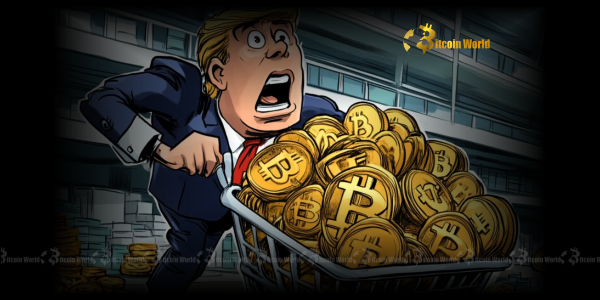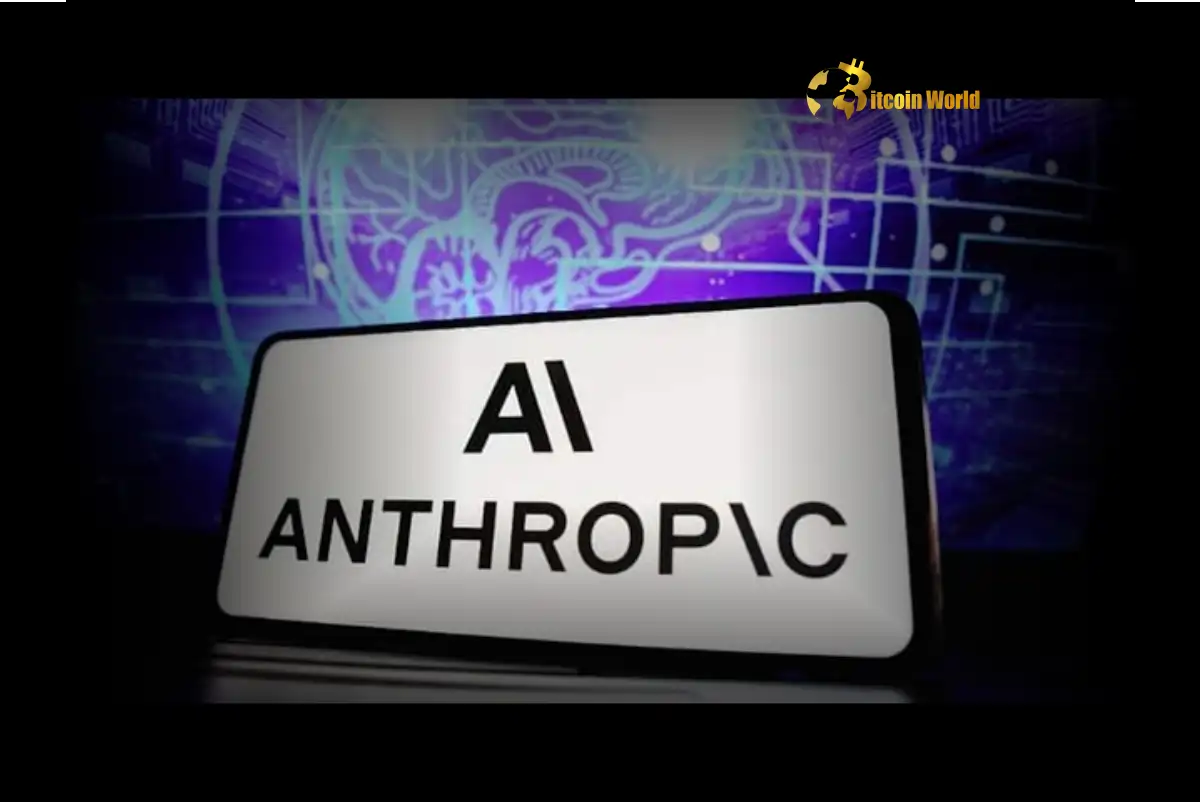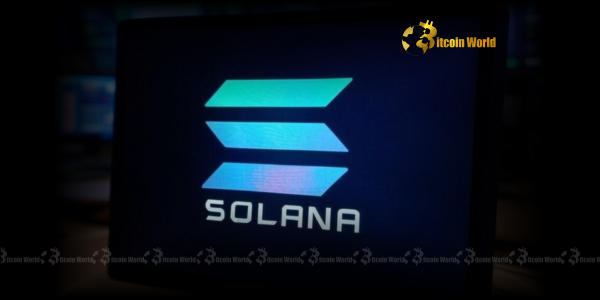BitcoinWorld

Crypto Retirement Plans: Trump’s Historic Order Unlocking Digital Assets for Your Future
Are you looking for innovative ways to secure your financial future, perhaps even venturing beyond traditional stocks and bonds? The world of retirement planning is on the cusp of a potentially revolutionary shift, and it’s being driven by a surprising source: a prospective executive order from U.S. President Donald Trump. Imagine a future where your Crypto Retirement Plans aren’t just a dream, but a tangible reality within your 401(k) or other retirement vehicles. This is precisely what’s being discussed, promising to reshape how Americans approach long-term wealth building.
What’s Happening: Trump’s Game-Changing Crypto Executive Order
The financial world is buzzing with reports that U.S. President Donald Trump is poised to sign an executive order that could fundamentally alter the landscape of retirement investing. According to sources like Crypto Briefing, this order aims to remove existing barriers, paving the way for the inclusion of both cryptocurrencies and gold in established retirement plans, such as the widely popular 401(k)s. This isn’t just a minor tweak; it’s a directive that could compel regulators to review and eliminate the hurdles that have, until now, largely kept these alternative assets out of mainstream retirement portfolios.
For years, investing in digital assets like Bitcoin or Ethereum within a regulated retirement account has been fraught with complexities, often requiring specialized, self-directed IRAs that come with their own set of rules and limitations. Similarly, direct physical gold investments in 401(k)s have faced stringent regulations. This anticipated Trump Crypto Executive Order signifies a potential top-down push to legitimize and integrate these assets into the core of American retirement savings, offering a new dimension of diversification and growth potential for millions of investors.
The implications are vast, suggesting a future where:
- Easier Access: Individuals might find it simpler to allocate a portion of their 401(k) or similar plans to cryptocurrencies and gold without navigating complex, niche investment vehicles.
- Regulatory Clarity: The order would likely compel agencies like the Department of Labor and the IRS to provide clearer guidelines, reducing the ambiguity that has often deterred mainstream financial institutions from offering these options.
- Increased Adoption: With clearer pathways, more fund providers and employers might begin to offer crypto and gold options, leading to broader adoption across the retirement savings ecosystem.
This move, if enacted, underscores a growing recognition of digital assets and precious metals as legitimate components of a diversified investment strategy, even at the highest levels of government.
Why Consider Digital Assets for Your Retirement?
The idea of holding Digital Assets Retirement accounts might seem novel to some, but it’s a concept gaining significant traction among investors seeking diversification and inflation protection. Cryptocurrencies, despite their volatility, have demonstrated remarkable growth potential over the past decade, often outperforming traditional asset classes. Gold, on the other hand, has historically served as a reliable store of value and a hedge against economic uncertainty and inflation.
Benefits of Including Digital Assets and Gold:
- Diversification Beyond Traditional Assets: Stocks and bonds are correlated; when one goes down, the other often follows. Cryptocurrencies and gold, however, often exhibit low correlation with traditional markets, meaning they might move independently, potentially reducing overall portfolio risk.
- Inflation Hedge: In times of rising inflation, the purchasing power of fiat currencies erodes. Gold has long been a classic inflation hedge, and many argue that Bitcoin, with its capped supply, could serve a similar purpose in the digital age.
- Potential for High Growth: While past performance is not indicative of future results, the growth trajectory of leading cryptocurrencies has been exponential. Allocating a small portion of a retirement portfolio could offer exposure to significant upside potential.
- Accessibility and Liquidity (for Crypto): Digital assets can be traded 24/7 on global exchanges, offering unparalleled liquidity compared to some traditional assets.
Challenges and Considerations:
It’s crucial to approach this with a balanced perspective. While the benefits are compelling, there are significant challenges:
- Volatility: Cryptocurrencies are notoriously volatile. Significant price swings, both up and down, are common. This inherent risk needs to be carefully weighed, especially for long-term retirement planning.
- Regulatory Uncertainty: While the executive order aims to reduce barriers, the regulatory landscape for digital assets is still evolving. Future regulations could impact their value or accessibility.
- Security Risks: Storing digital assets requires robust security measures to prevent hacking or loss. Custody solutions for retirement accounts would need to be extremely secure.
- Complexity: Understanding the nuances of various cryptocurrencies and blockchain technology can be complex, requiring significant due diligence from investors.
For many, the appeal of incorporating these assets lies in their potential to enhance long-term returns and provide a hedge against economic instability, especially in an era of unprecedented monetary expansion.
Gold in 401(k)s: A Time-Tested Alternative Investment
While cryptocurrencies represent the new frontier, the inclusion of Gold in 401k plans is a re-affirmation of a time-honored investment strategy. Gold has been a staple in investment portfolios for centuries, revered for its stability and intrinsic value. Its appeal as a ‘safe-haven’ asset often shines during periods of economic uncertainty, geopolitical instability, or high inflation, when traditional paper assets may falter.
Currently, investing in gold within a 401(k) typically involves indirect methods, such as investing in gold ETFs (Exchange Traded Funds) or mutual funds that hold gold mining stocks. Direct ownership of physical gold within a 401(k) or IRA requires a self-directed account and specific custodians, and the physical gold must be stored in an approved depository. The anticipated executive order could streamline this process, making it easier for mainstream 401(k) providers to offer direct gold exposure.
Why is gold still relevant, especially alongside emerging digital assets?
- Tangible Asset: Unlike digital currencies or paper money, gold is a physical commodity with a finite supply, offering a sense of security and tangibility.
- Inflation Protection: As mentioned, gold has historically maintained its purchasing power during inflationary periods, serving as a reliable hedge.
- Diversification: Gold’s price movements often have a low correlation with stocks and bonds, making it an excellent diversifier that can reduce overall portfolio risk during market downturns.
- Global Acceptance: Gold is universally recognized and accepted as a store of value, providing liquidity across borders.
The move to ease access to gold within retirement accounts signals a broader acceptance of alternative investments and a recognition of the need for robust diversification in today’s unpredictable economic climate. It complements the push for crypto, offering a blend of traditional and cutting-edge diversification.
Navigating the Future: How to Invest in Crypto 401(k)s
While the executive order is a crucial first step, the actual implementation of allowing you to directly Invest in Crypto 401k plans will involve several stages. Financial institutions, custodians, and regulators will need to establish clear frameworks, security protocols, and educational resources. For investors, understanding how to approach this new opportunity responsibly will be paramount.
Actionable Insights for Prospective Investors:
- Stay Informed: Keep a close watch on regulatory developments. The specifics of how cryptocurrencies and gold will be integrated into 401(k)s will depend on the detailed guidelines issued by relevant agencies.
- Assess Your Risk Tolerance: Cryptocurrencies, in particular, carry significant risk due to their volatility. Before considering any allocation, honestly evaluate your comfort level with potential losses. Retirement savings are long-term, but extreme volatility can be unsettling.
- Start Small and Diversify: If and when these options become available, consider allocating only a small percentage of your overall retirement portfolio to these alternative assets. Diversification remains key; don’t put all your eggs in one basket, no matter how promising it seems.
- Research Custodians and Providers: Not all 401(k) providers may immediately offer crypto or gold options. Research which platforms and custodians are equipped to handle these assets securely and compliantly. Look for those with a strong track record in asset security and regulatory adherence.
- Seek Professional Advice: Consult with a qualified financial advisor who understands both traditional and digital asset markets. They can help you integrate these new options into your overall financial plan, ensuring it aligns with your long-term goals and risk profile.
- Understand Tax Implications: While 401(k)s offer tax-advantaged growth, the specific tax treatment of crypto and gold within these plans will need to be clearly understood.
The ability to invest in crypto and gold within retirement plans represents a significant shift towards greater financial freedom and expanded investment choices. It acknowledges the evolving financial landscape and the growing demand from investors for access to a broader range of assets.
The Road Ahead: What This Means for Your Retirement
The potential executive order allowing Crypto Retirement Plans and gold investments marks a pivotal moment for the future of personal finance. It signals a governmental acknowledgment of digital assets and precious metals as legitimate components of a robust investment strategy, potentially opening doors to billions of dollars flowing into these markets through traditional retirement vehicles.
This development could lead to increased institutional adoption of cryptocurrencies, as 401(k) providers and asset managers build the infrastructure to support these offerings. For the average American saver, it means greater flexibility and potentially higher returns, albeit with increased risk. It empowers individuals to take more control over their financial destiny, moving beyond the confines of conventional investment options.
Ultimately, this executive order, if signed, won’t instantly change everyone’s retirement portfolio. But it sets the stage for a future where diversification truly means exploring every viable asset class, old and new. It’s an exciting prospect for anyone looking to fortify their retirement savings against economic shifts and embrace the innovation of the digital age.
To learn more about the latest crypto market trends, explore our article on key developments shaping digital asset institutional adoption.
This post Crypto Retirement Plans: Trump’s Historic Order Unlocking Digital Assets for Your Future first appeared on BitcoinWorld and is written by Editorial Team





